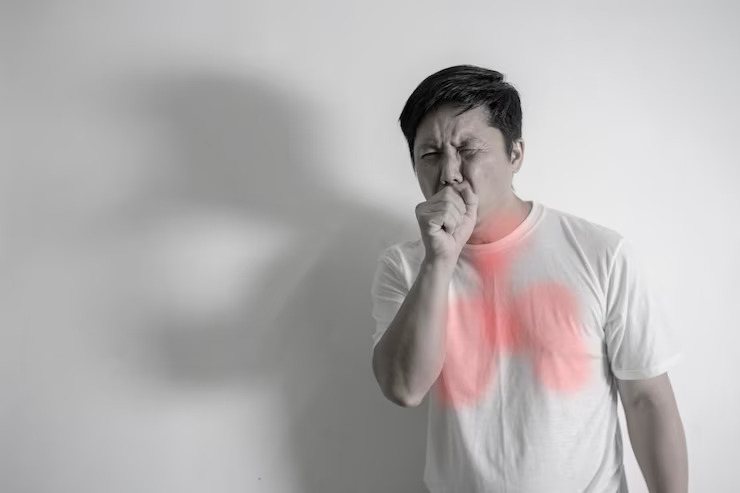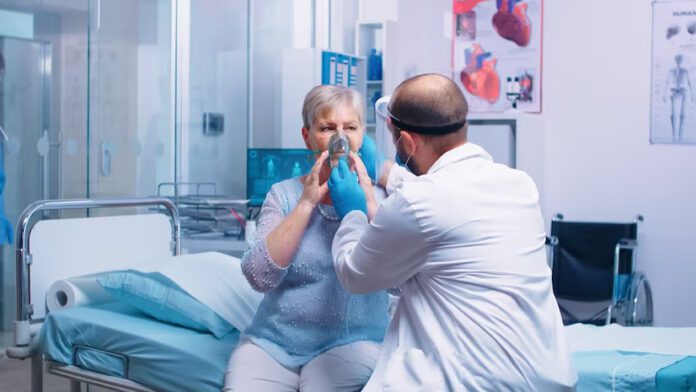“A breath of fresh air turns into a cloud of concern when multifocal pneumonia strikes. This elusive respiratory condition can leave you gasping for answers as it affects multiple areas of the lungs with its relentless grip. In this comprehensive guide, we unlock the mystery behind multifocal pneumonia, shedding light on its causes, unraveling its telltale symptoms, and revealing the lifelines of treatments to help you breathe easy once again. So buckle up as we embark on this lung-saving journey together!”
Introduction – What is Multifocal Pneumonia?
Multifocal pneumonia is a type of pneumonia that affects more than one lobe of the lungs. Various pathogens, including bacteria, viruses, and fungi, can cause it. Symptoms of multifocal pneumonia include coughing, shortness of breath, chest pain, and fever.
Causes of Multifocal Pneumonia
A kind of pneumonia known as multifocal pneumonia affects different parts of the lungs. The most common cause of multifocal pneumonia is infection with a virus, such as influenza. Other causes of multifocal pneumonia include infection with bacteria, fungi, or other organisms; exposure to environmental toxins; and autoimmune disorders. Symptoms of multifocal pneumonia include coughing, chest pain, shortness of breath, and fever.
Symptoms of Multifocal Pneumonia
Pneumonia is an infection of the lungs that can cause mild to severe respiratory illness. Symptoms of pneumonia can include coughing, chest pain, shortness of breath, rapid breathing, sweating and fever. Pneumonia may be brought on by a variety of pathogens, including bacteria, viruses, and fungus. A kind of pneumonia called multifocal pneumonia is brought on by several microorganisms.
The most common symptoms of multifocal pneumonia are coughing, chest pain and shortness of breath. Other symptoms may include rapid breathing, sweating and fever. Pneumonia can be severe and even fatal in some cases. For the greatest results, early diagnosis and treatment are crucial.

Diagnosis and Tests for Multifocal Pneumonia
Multifocal pneumonia is a type of pneumonia that affects more than one lobe of the lungs. The most common symptoms of multifocal pneumonia are coughing shortness of breath, and chest pain. Multifocal pneumonia can be challenging to diagnose because the symptoms can mimic other lung diseases. A thorough medical history and physical examination are often the first steps in diagnosing multifocal pneumonia. Blood tests, chest X-rays, and CT scans may also be ordered to confirm the diagnosis. Treatment for multifocal pneumonia typically includes antibiotics and supportive care.
Treatment Options for Multifocal Pneumonia
Multifocal pneumonia is a severe lung infection that can be difficult to treat. Several treatment options are available, and the best course of action will depend on the individual patient’s situation.
Antibiotics are the most common form of treatment for multifocal pneumonia. They can be taken orally or intravenously, and they work to clear the infection from the lungs. However, some patients may not respond well to antibiotics, so other options must be considered.
Other treatments for multifocal pneumonia include oxygen therapy, mechanical ventilation, and corticosteroids. Oxygen therapy helps to ease breathing difficulty and respiratory failure. Mechanical ventilation can be used if a patient is not responding to oxygen therapy or is in danger of respiratory failure. Corticosteroids help to reduce inflammation in the lungs and can be used as either oral or inhaled medication.
Working with a medical professional to determine the best course of action for each case of multifocal pneumonia is crucial. With proper treatment, patients can fully recover from this severe condition.
Prevention Tips to Avoid Getting/Spreading Multifocal Pneumonia
If you have pneumonia, it is essential to prevent the infection’s spread to others. Here are some tips:
-Whenever you cough or sneeze, cover your mouth and nose with a tissue. Following usage, dispose of the tissue in the garbage.
-Regularly wash your hands with soap and water, particularly after sneezing or coughing. Alcohol-based hand rubs are also effective.
-Avoid making close touch with ill individuals.
-Stay home from work, school, or daycare if you are sick. This will help prevent the spread of pneumonia to others.
If you are around someone with pneumonia, it is also essential to take measures to protect yourself from getting the infection:
-Wear a mask if you are in close contact with someone with pneumonia.
When to See a Doctor
If you have any of the symptoms of multifocal pneumonia, you should see a doctor immediately. This is especially true if you are having trouble breathing or if your cough produces blood.
Conclusion
Multifocal pneumonia is an infection in the lungs that can have serious complications. It is essential to recognize the signs and symptoms of this condition and seek medical attention if they are present. By understanding what causes multifocal pneumonia, correctly diagnosing it early, and following a suitable treatment plan outlined by your healthcare provider, you can significantly reduce your risks for long-term lung damage or even death from this potentially deadly illness.

